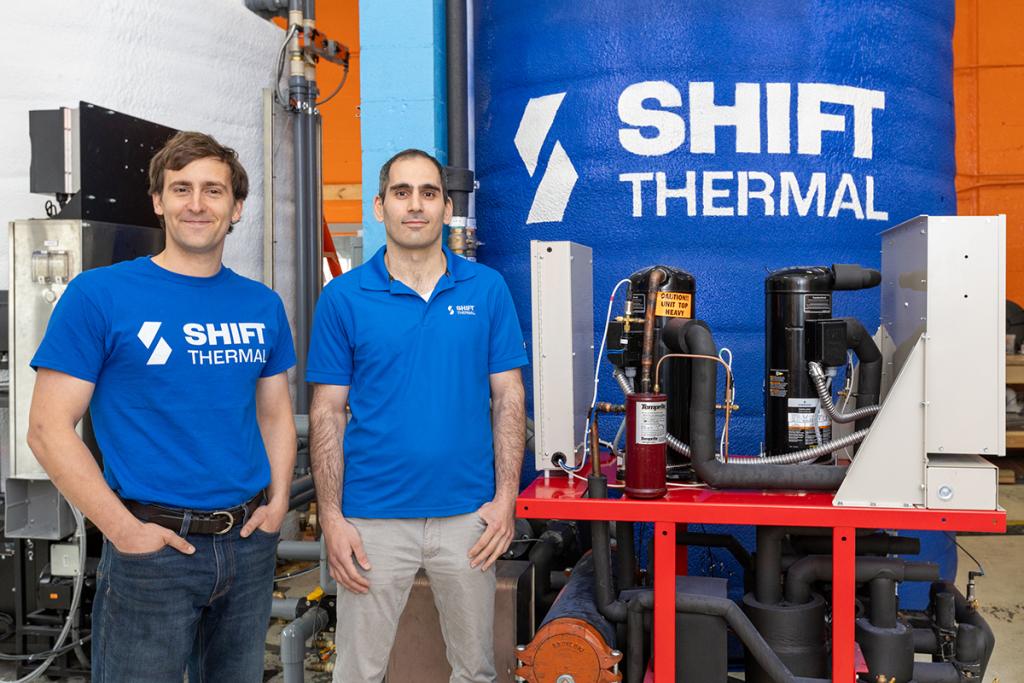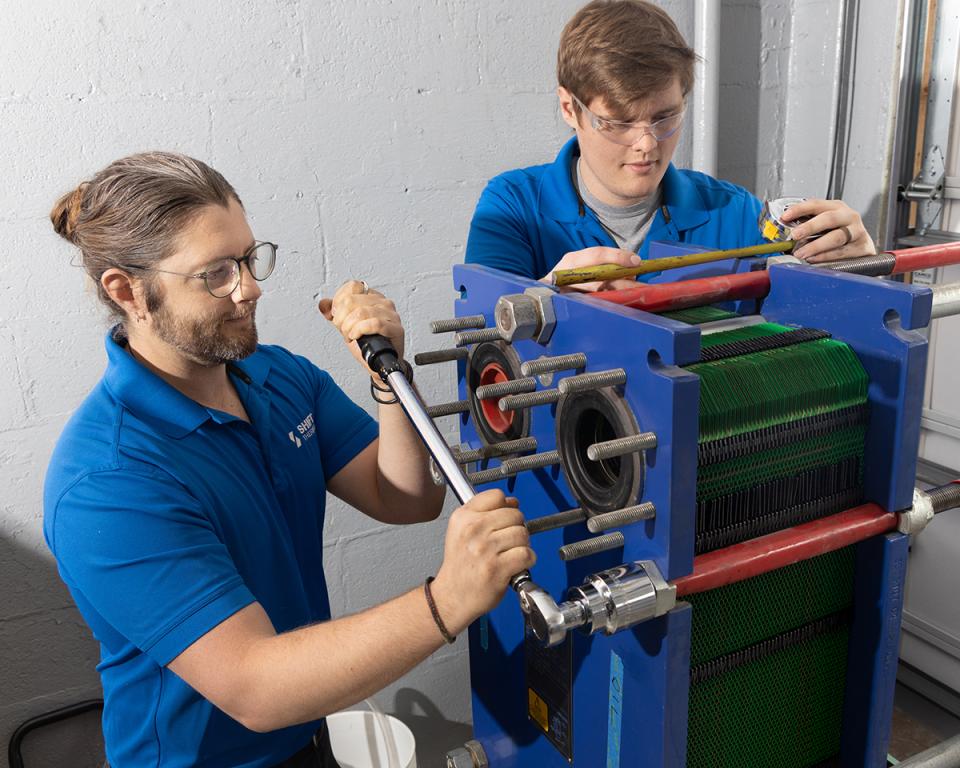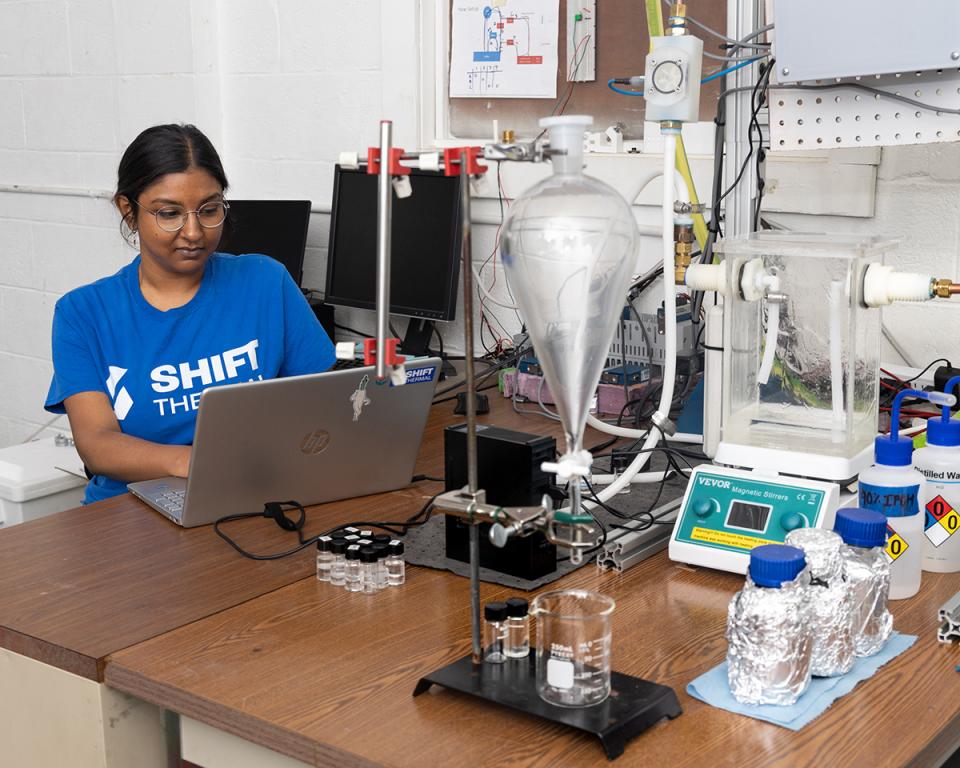
When Mitchell Ishmael earned his doctorate in 2017, he also gained the technical knowledge to understand surface chemistry, high-precision instruments and materials properties.
But what he did not have was the know-how to start a high-tech company, raise venture capital, create business plans and launch a product that could change the future of thermal energy storage.
Ishmael applied and was accepted into the Innovation Crossroads program at the Department of Energy's Oak Ridge National Laboratory with the goal of filling in the gaps to help jump-start the company he co-founded, Shift Thermal, formerly known as Active Energy Systems. He was among Innovation Crossroads' first cohort of fellows, completing the two-year program in 2019.
"I just didn't really understand what the correct direction for commercialization was," said Ishmael, who also serves as the company's chief technology officer. "The Innovation Crossroads program takes an entrepreneur who has a lot of energy and a lot of excitement, but maybe not that much know-how. This program gave me the time and support to figure things out."

Through Innovation Crossroads, fellows are connected to experts, mentors and networks in technology-related fields and are provided access to ORNL's unique scientific resources and capabilities. The fellowship includes a personal living stipend, along with health insurance and travel allowance, as well as R&D funding for collaboration with ORNL researchers.
For Shift Thermal, the program was essential for its success, Ishmael said. "By having that significant support for that significant duration of time, we could make mistakes and be OK."
Innovation Crossroads program lead Dan Miller said, "Mitch exemplifies the power of market-driven innovation, skillfully navigating feedback to steer his company. He and his team have shown flexibility in adapting to the market to deliver meaningful products and ensure the company's sustainability. Mitch's strategic use of ORNL and local resources underscores his dedication to building a thriving company within a vibrant ecosystem."
Shift Thermal is commercializing advanced ice thermal energy storage for heating, ventilation and air conditioning, shifting the cooling process to be more sustainable, cost-effective and resilient. Its thermal storage module is suited for both air conditioning and process cooling applications, capable of storage temperatures from 0 to minus 15 degrees Celsius, or 32 to 5 degrees Fahrenheit. It does this by freezing water without the ice sticking to the cold surface. The module solves the problem of other ice thermal energy storage systems by eliminating the insulative ice layer and passively shedding slurry from the surface.
While many people equate energy storage with batteries, that is only a small portion of the energy storage industry. Having energy available when the grid goes down is critical to keeping essential infrastructure operating. Shift Thermal wants to enable a lower-cost, more efficient thermal energy storage method to provide long-duration resilient cooling when the electric grid is down.
The ability to efficiently make ice for cooling systems without it sticking to a heat exchanger surface is a much-needed innovation, Ishmael said.
Now the company is expanding its product offering, with plans to work on a heat pump system that can provide energy storage for both heating and cooling.

The company shipped its first product in mid-February, plans to deliver another system for third-party laboratory testing in May, and is hoping to have a demonstration project in the field this summer. It is actively seeking partners for field demonstrations.
"Energy storage is going to play a big role in the future of the grid. We want to work with forward-looking companies to help build that future together," Ishmael said.
Energy storage allows the user to decouple electricity supply and demand. Traditionally, the electricity needed to run a cooling system must be generated - for example from a power plant - at the same time cooling is required. On the other hand, energy storage allows the user to draw low-cost, low-carbon power from the grid to charge the thermal battery. That thermal battery can later be used to provide cooling when it's needed and avoid high power costs.
"That's what really sets this technology apart from today's options," Ishmael said. "This will meet the need for thermal storage to be able to discharge and charge more responsively and cost effectively." Commercial systems such as public buildings, schools, libraries and office buildings could use such a system, lowering energy use and costs.
Ishmael, who is from Tennessee, was no stranger to ORNL when he joined Innovation Crossroads. His first job was as an intern at ORNL. He chose to base Shift Thermal in Oak Ridge because of the breadth and depth of research support and technical knowledge in the area, particularly with ORNL and the University of Tennessee nearby.
He continues to work with ORNL scientists, such as Kyle Gluesenkamp, senior R&D staff member, and Xiaobing Liu, Thermal Energy Storage group leader, who both provide advice and support working in the Buildings and Transportation Science Division.
"Over the past seven years or so, the ecosystem for technology entrepreneurs has really developed," Ishmael said. "There is a critical mass here, and there is no better place to be."
UT-Battelle manages ORNL for DOE's Office of Science, the single largest supporter of basic research in the physical sciences in the United States. DOE's Office of Science is working to address some of the most pressing challenges of our time. For more information, visit energy.gov/science. -Lawrence Bernard






